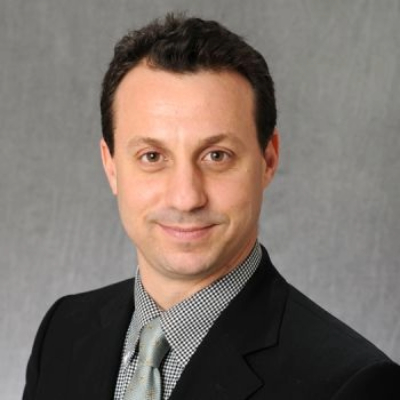The GW Technology Commercialization Office (TCO) is proud to announce the winners of the Technology Maturation Awards (TMAs) for the academic year for the 2025. The TMAs are designed to accelerate promising GW inventions that show strong potential for societal and commercial impact.
This year, the GW TCO awarded TMAs to five such innovative technologies in life sciences and physical sciences. Each of these projects received up to $50,000 in internal research funding to facilitate development of their technologies through proof-of-concept, prototyping, technology development and/or scale-up work. This funding will help them demonstrate their commercial viability and attract experienced partners bringing them closer to commercialization.
- Dr. Andrew Meltzer: Novel GuideWire to Prevent Incidents of Retention
- Image

Dr. Meltzer’s technology, GuideGuard, was co-invented with Dr. Daniel Shpigel and Aditya Loganathan. It offers an innovative solution to prevent incidents of guidewire retention during central venous catheterization. Central venous catheterization is a critical medical procedure performed millions of times annually. However, complications such as guidewire retention can pose severe cardiovascular risks, leading to additional medical interventions and increased healthcare costs. Dr. Meltzer’s GuideGuard enhances traditional method with a unique fail-safe mechanism that eliminates the risk of human error. Dr. Meltzer and his team validated the need for this product by interviewing clinicians, administrators, and med-tech executives.The Technology Maturation Award will facilitate further development of this solution through prototyping and improvements, preparing it for commercialization. GuideGuard has the potential to enhance patient safety and reduce overall healthcare costs by preventing complications and legal Liabilities.
- Dr. Inhee Chung: Robust Prognostic Solutions for High-Risk DCIS
- Image

Dr. Inhee Chung's transformative work on the Robust Prognostic Solution for High-Risk Ductal Carcinoma In Situ (DCIS) aims to improve the overall well-being of DCIS patients. DCIS is a non-invasive form of breast cancer in which abnormal cells are confined to the milk ducts. A key challenge is the lack of diagnostic tools to predict which cases may progress to invasive cancer, often resulting in overtreatment. This leads to unnecessary surgeries, radiation therapies, and emotional distress even when some cases may pose no real threat. Dr. Chung’s novel tool aims to combine immunohistochemistry, AI-driven image classification, and pathological annotations to identify plasma-membrane-associated markers for DCIS progression to invasive breast cancer.This work is based on GW Technology, “Innovative Diagnostic Tool for Predicting Breast Cancer Progression Risk,” invented by Dr. Chung. Supported by the TMA award, Dr. Chung will conduct a longitudinal study on retrospective cases to refine risk prediction. This approach aims to enable personalized treatments, improve outcomes, and reduce unnecessary interventions.
- Houston Miller: Innovative laser-based Fire Optical Metrology (FOM) Sensor
- Image

Dr. Miller’s Fire Optical Metrology (FOM) sensor is an innovative approach for fire diagnostics addresses challenges associated with climate change through applications in industrial flares and wildfires. This sensor leverages laser heterodyne radiometry (LHR) to identify combustion markers by precisely detecting molecular emissions without introducing radiation to the environment. This approach provides combustion efficiency monitoring, a critical operational challenge with industrial flares, and provides real-time data for fire intensity, spread, and emissions to guide first responders in case of a wildfire.
The TMA grant will accelerate R&D efforts of Dr. Miller and his team to develop a compact, scalable system that addresses the gaps in fire and flare monitoring technologies, driving an impactful change in environmental monitoring and safety.
- M. Ashraf Imam & David Nagel: Novel method to Create New Catalysts for Chemical and Nuclear Reactions
- Image

Pushing the boundaries of material science Imam and Nagel proposed a transformative approach towards catalysis and energy generation. Their process utilizes techniques like microwave radiation and inductive heating to create porous materials with controllable densities and intricate structures. These materials are suited for catalytic operations in batteries, fuel cells, chemical reactors, and beyond. From improving drug manufacturing efficiency to producing thermal and electrical power from low-energy nuclear reactions, their idea has the potential to have a positive societal and commercial impact. This work builds on the patented GW technology, “Materials and Coatings of Variable Density for Electrodes and Catalysts,” invented by Nagel and Imam.
The TMA funding will support proof-of-concept development, material optimization, and prototype creation, demonstrating the commercial viability of their invention. Additionally, it will facilitate engagement with potential industry partners in powder metallurgy and chemical processing.
- Dr. Michael Keidar: Revolutionary propulsion technology with Self-Neutralizing Air-Breathing Electric Thruster
- Image

Keidar proposed SNABET, an innovative propulsion technology for Very Low Earth Orbit (VLEO) satellites (<200 km altitude). Existing imaging satellites face challenges such as short lifespans, low-resolution imaging, collision risks, and high fuel and launch costs. Dr. Keidar's revolutionary approach addresses these issues by enabling satellites to operate at lower altitudes without onboard fuel, making them more cost-effective. The technology has broad applications across industries like agriculture, urban planning, national security, and disaster management. By enabling high-resolution imaging, SNABET supports initiatives in environmental monitoring and critical communication systems.
This work builds on two GW Technologies invented by Dr. Keidar:
The TMA funding will accelerate the development of SNABET by enabling proof-of-concept demonstrations, optimization of propulsion performance, and prototype creation. It will also support collaborations with key players in the aerospace industry and pave the way for commercialization, unlocking new opportunities in VLEO satellite markets.


